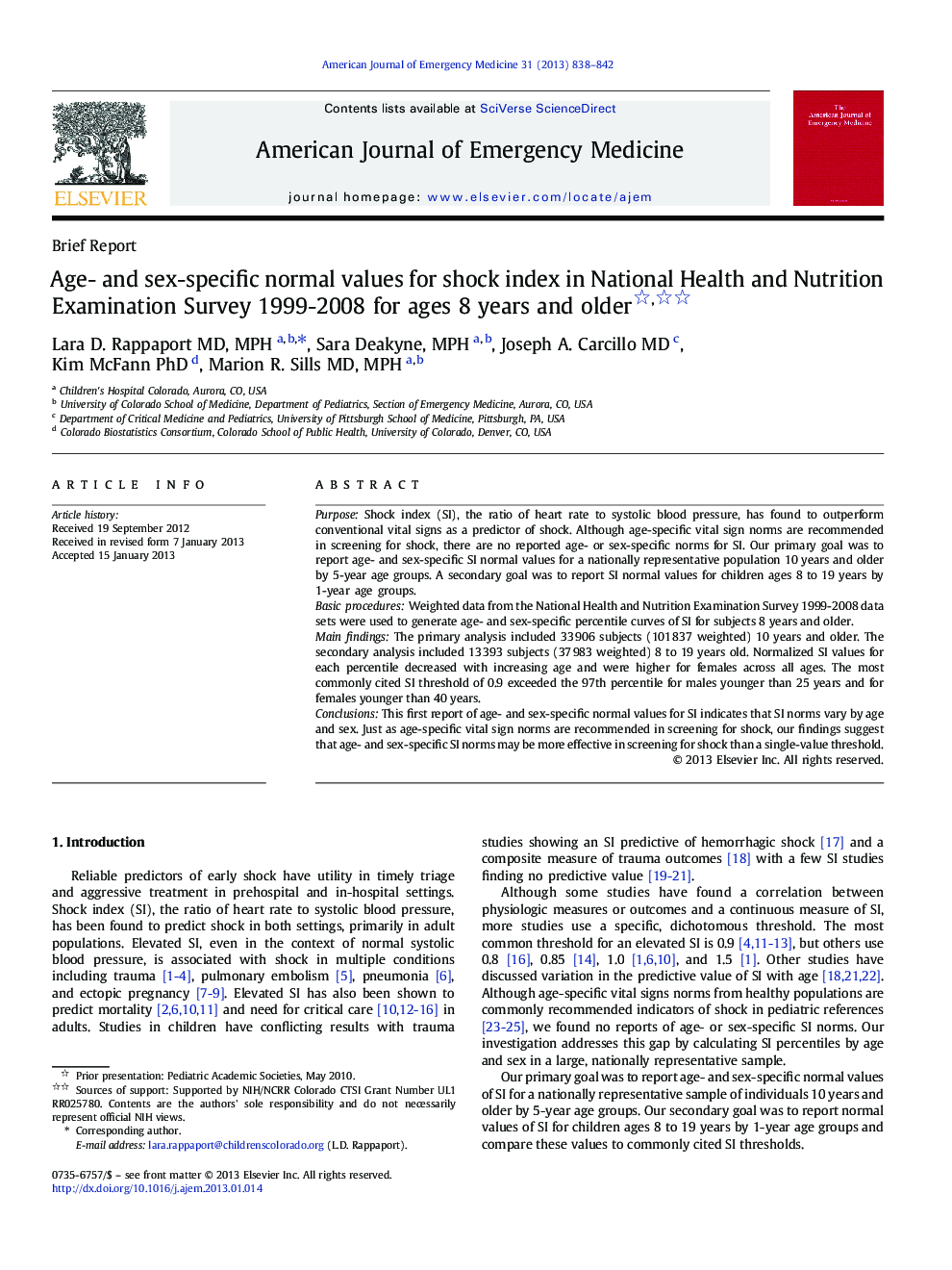| Article ID | Journal | Published Year | Pages | File Type |
|---|---|---|---|---|
| 3225177 | The American Journal of Emergency Medicine | 2013 | 5 Pages |
PurposeShock index (SI), the ratio of heart rate to systolic blood pressure, has found to outperform conventional vital signs as a predictor of shock. Although age-specific vital sign norms are recommended in screening for shock, there are no reported age- or sex-specific norms for SI. Our primary goal was to report age- and sex-specific SI normal values for a nationally representative population 10 years and older by 5-year age groups. A secondary goal was to report SI normal values for children ages 8 to 19 years by 1-year age groups.Basic proceduresWeighted data from the National Health and Nutrition Examination Survey 1999-2008 data sets were used to generate age- and sex-specific percentile curves of SI for subjects 8 years and older.Main findingsThe primary analysis included 33 906 subjects (101 837 weighted) 10 years and older. The secondary analysis included 13 393 subjects (37 983 weighted) 8 to 19 years old. Normalized SI values for each percentile decreased with increasing age and were higher for females across all ages. The most commonly cited SI threshold of 0.9 exceeded the 97th percentile for males younger than 25 years and for females younger than 40 years.ConclusionsThis first report of age- and sex-specific normal values for SI indicates that SI norms vary by age and sex. Just as age-specific vital sign norms are recommended in screening for shock, our findings suggest that age- and sex-specific SI norms may be more effective in screening for shock than a single-value threshold.
